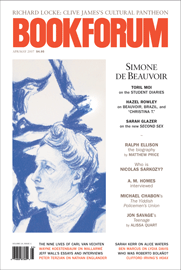
According to the sixteenth-century Jesuit scholar Matteo Ricci, a memory palace is a complex mnemonic system, a mental structure kept in one’s head and not a physical (literal) structure to be constructed from real (concrete) materials. The purpose of such mental constructs, he explains, is “to provide storage spaces for the myriad concepts that make up the sum of our human knowledge.” Each thing we want to remember is assigned an image, which is then committed to a location in the memory palace, where it rests until we choose to “reclaim it by an act of memory.”
From the title of Patricia Vigderman’s The Memory Palace of Isabella Stewart Gardner, one might presume that it was the Gardner Museum’s founder who had constructed a memory palace. Her turn-of-the- century Bostonian palace, Fenway Court, is a vast (literal) structure brimming over with (concrete) objects, and Gardner was unequivocal that after her death not a single object be moved from the position she had set for it. Are we to assume that the objects and their particular positions might be keys to some mnemonic system of her devising?
On further reading, it becomes apparent that it is Vigderman who has constructed a memory palace on the site of Gardner’s museum. The pleasure the author takes in roaming the building and delving into archival material is palpable. We are taken on a tour past paintings, dishes, manuscripts, and letters, even stopping to look at gaps in the installation—empty frames that act as reminders of stolen Vermeers, Rembrandts, and Manets, each without one of those cards called fantômes that indicate a hope for the paintings’ return.
Vigderman notes that visiting the museum is a mixed experience. The immense and impressive collection is “displayed in room after beautiful room.” And yet great works are hung so high as to be impossible to view, propped where it is necessary to crouch to see them, or placed with a seeming disregard for whether the works are or aren’t illuminated. It begins to feel like an experience in collecting mania, an example of an enthusiastic spirit on holiday in an auction house: an immense Venetian palazzo filled with both priceless works and cups, mirrors, chopsticks, silks—all arranged entirely according to private aesthetic references and associations, none of which will ever be altered.
The author assembles fragments from her inquiry in an attempt to form a portrait of the elusive Gardner, an avid collector until her death in 1924 and an equally ardent friend to writers and artists. The book’s form is reminiscent of a guidebook; each chapter begins with an object from the collection: a Japanese screen, a Spanish altar, a lithotint by Whistler. These act as hooks for Vigderman’s writing, but the relationships she draws seem tangential, the links sometimes arbitrary. Though it’s refreshing not to be confined to an overly explicit reading of object and text, one wonders whether Gardner’s taste for enigmatic references might have been contagious, a case of the author unwittingly being influenced by her subject.
“C’est Mon Plaisir” is the motto over the front door of Gardner’s museum. Does it refer to her pleasure in collecting, in offering this set of works to the public, or in something more private? Vigderman points out that plaisir means “will” as clearly as it means “pleasure” and that willfulness is not really a good friend to art.
